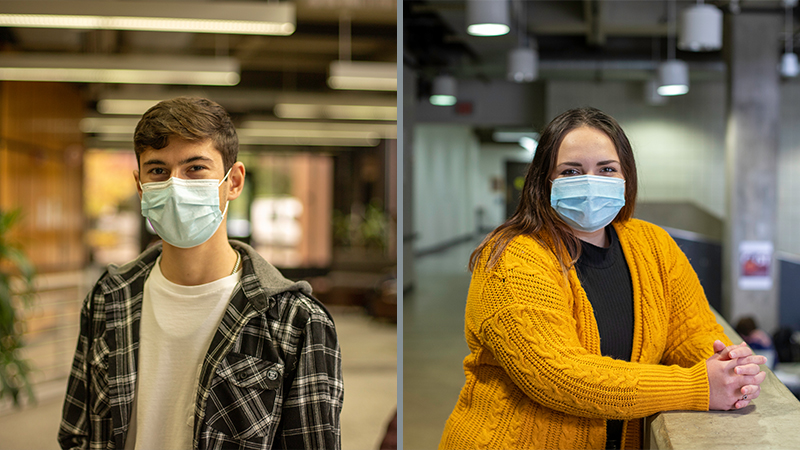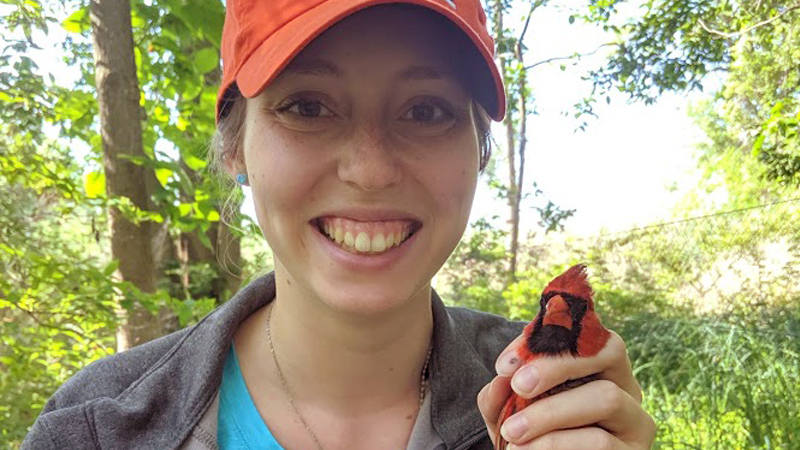Climate Change Course: Complex Teams Solving Complex Problems
RIT students from all majors learn creative and interdisciplinary problem-solving through the perspectives of a diverse set of faculty members.
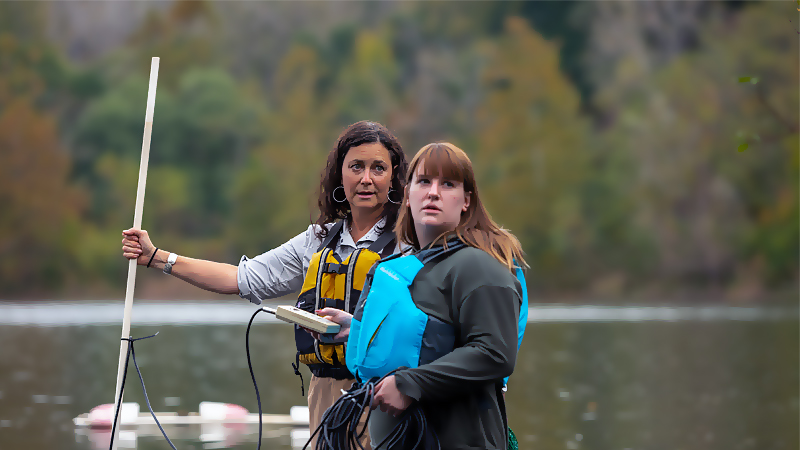
With the world warming faster than at any point in recorded history, climate change is the most significant environmental problem we face as a society today. There are multiple ways of solving climate change, so it makes sense that RIT's course on climate change is taught by faculty from four different departments. This way, students learn the creative and interdisciplinary problem-solving that modern, complex problems require.
Students from all majors learn about the complex issue of climate change through perspectives from a diverse set of faculty. Since climate change research and policy are constantly changing, the course evolves with it.
The Climate Change: Science Technology & Policy course is co-taught by multiple professors from the following departments:
- Thomas H. Gosnell School of Life Sciences
- School of Chemistry and Materials Science
- School of Mathematical Sciences
- Department of Public Policy
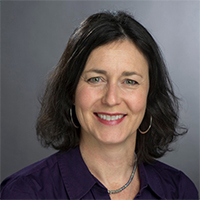 Dr. Christy Tyler, a professor in the Thomas H. Gosnell School of Life Sciences, is an ecologist fascinated by how organisms interact with each other and with their environment. “I’ve held this fascination since I was a child. Understanding how people disrupt these interactions and what we can do about it drives everything I do as a scientist.”
Dr. Christy Tyler, a professor in the Thomas H. Gosnell School of Life Sciences, is an ecologist fascinated by how organisms interact with each other and with their environment. “I’ve held this fascination since I was a child. Understanding how people disrupt these interactions and what we can do about it drives everything I do as a scientist.”
Dr. Tyler is a core faculty member of the course who teaches students about topics related to climate interactions with the biosphere. "I think students walk away with an understanding of the climate problem's complexity and the need for cross-disciplinary conversations and action." Graduate students in the course are required to teach a lesson on climate change to K12 students, which helps to develop skills for communication with diverse groups.
Dr. Tyler’s team is working on a number of projects related to wetland restoration. Wetlands are important for many reasons, including carbon sequestration, the process of capturing and storing atmospheric carbon dioxide, and nutrient removal. However, wetlands can also be a natural source of greenhouse gasses. Successful restoration faces challenges because the changing climate makes it hard to predict local weather patterns, how waterfowl, plants, and microbes respond to higher temperatures, and how community interactions will develop. Taking climate change into consideration when designing wetlands is critical.
“I’m also interested in food waste management and work on this problem with a highly interdisciplinary team from RIT, led by Dr. Callie Babbitt, professor at the Golisano Institute for Sustainability. Wasted food in landfills is a huge source of greenhouse gasses. Still, diversion from landfills and valorization can create many other environmental problems including water pollution, additional greenhouse gas release, and environmental justice concerns.”
Another significant thrust in Dr. Tyler’s lab is plastic pollution. Organisms already stressed by climate change face threats from plastic pollution that can push organisms beyond the threshold of survivorship, and extreme weather events create runoff that moves plastic around in the environment. Plastic pollution research is a collaborative effort conducted with several other College of Science faculty, including Dr. Christy Tyler, Dr. Matthew Hoffman from the School of Mathematical Sciences and Dr. André Hudson from the Thomas H. Gosnell School of Life Sciences, Dr. Nathan Eddingsaas, from the School of Chemistry and Materials Science, and Dr. Steven Day from the Kate Gleason College of Engineering.
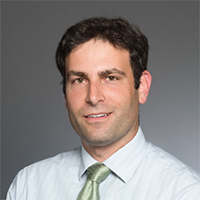 Dr. Matthew Hoffman, an associate professor in the School of Mathematical Sciences, is an applied mathematician with a background in numerical weather and oceanographic prediction. Dr. Hoffman helped develop the course with Dr. Tyler, Dr. Eddingsaas, and Dr. Hittinger, and he teaches about oceanography, climate modeling, and forecasting. “As a Ph.D. student, I became interested in chaotic systems–like weather and climate–where small changes in one place can lead to often surprising changes somewhere else. Having faculty from different areas teaching the class really conveys the complexity and interconnectedness of the climate system.”
Dr. Matthew Hoffman, an associate professor in the School of Mathematical Sciences, is an applied mathematician with a background in numerical weather and oceanographic prediction. Dr. Hoffman helped develop the course with Dr. Tyler, Dr. Eddingsaas, and Dr. Hittinger, and he teaches about oceanography, climate modeling, and forecasting. “As a Ph.D. student, I became interested in chaotic systems–like weather and climate–where small changes in one place can lead to often surprising changes somewhere else. Having faculty from different areas teaching the class really conveys the complexity and interconnectedness of the climate system.”
Dr. Hoffman’s research involves combining observational data with computational models. Right now, he has a large focus on modeling the transport and fate of plastic pollution in the Great Lakes and the oceans. “There was initial speculation that garbage patches might form in the Great Lakes, but our modeling indicates that plastic is not accumulating in the centers.” The Great Lakes, like the oceans, have less plastic floating than is predicted to enter, so Dr. Hoffman’s research is trying to better model how plastic moves vertically in the water, gets stranded on beaches and degrades in the environment.
 Dr. Nathan Eddingsaas, associate professor in the School of Chemistry and Materials Science is looking at micro and macro plastic pollution's role on our environment. "I’m studying sources and sinks, quantity, and degradation pathways. The studies are in many media, plastic in aquatic systems, from the atmosphere, in terrestrial systems, and associated with food waste."
Dr. Nathan Eddingsaas, associate professor in the School of Chemistry and Materials Science is looking at micro and macro plastic pollution's role on our environment. "I’m studying sources and sinks, quantity, and degradation pathways. The studies are in many media, plastic in aquatic systems, from the atmosphere, in terrestrial systems, and associated with food waste."
Dr. Eddingsaas is an atmospheric scientist whose role in the course is to present the science behind climate change. What is a greenhouse gas? How do they trap heat? How do gases transport worldwide? Why do we focus on certain gas-phase species? In addition, he teaches a section on scientific communication. Climate change is complex and communicating about it isn't easy. "In general, scientists are not the best communicators to the general population; it is a skill that must be developed, which is also a reason for having an interdisciplinary team and understanding the problem from many angles as you can communicate about the subject better."
Dr. Eric Hittinger, interim department chair in the Department of Public Policy, researches energy system economics and policy. “Basically, the work I do is figuring out how to decarbonize energy systems while maintaining reasonable costs and reliable delivery of energy services.”
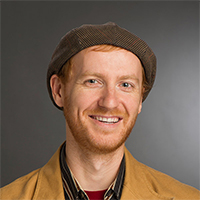 Dr. Hittinger’s work touches on various technologies related to electricity such as energy storage, wind and solar, electric vehicles, and energy efficiency. The challenge with these new technologies is understanding how they fit into the existing system in the short term and how much potential they have for large-scale use in the long term.
Dr. Hittinger’s work touches on various technologies related to electricity such as energy storage, wind and solar, electric vehicles, and energy efficiency. The challenge with these new technologies is understanding how they fit into the existing system in the short term and how much potential they have for large-scale use in the long term.
In the course, Dr. Hittinger teaches students the ways humans interact with climate change. This includes sources of emissions and technologies to reduce them, the economics of climate change, and policy options for addressing the problem.
Dr. Hittinger offers a bit of career advice for students interested in climate change. He suggests they focus their studies on a “big challenge.” By focusing on the bigger issues, they’ll stay employed for a long time. “Climate change is the type of challenge that will need efforts from all types of people for decades or even centuries to come. I like to work on problems where I can help out in some way, so climate/energy issues seemed like a pressing topic that needed skilled people.”
Faculty members from across campus are getting involved in helping students learn about all the aspects of climate change. Dr. Evelyn Brister, professor in the Philosophy Department at the College of Liberal Arts, joins the team to teach students about the ethical challenges of climate change. “Understanding that climate change exacerbates injustice is not enough. And having good intentions is not enough. We also need to think about what we can do as individuals and in our professional roles, and how to move from good intentions to effective actions.” Dr. Carmody McCalley discusses her work on permafrost thaw in the Arctic. Also, Enid Cardinal and Neha Sood bring in their experience creating climate solutions for the RIT campus and creating real-world projects for students to work on as a culminating experience. This year, Bill Moehle, the Brighton Town Supervisor, visited the class to discuss how local government plays an important role in climate solutions.
Dr. Tony Wong, assistant professor in the School of Mathematical Sciences, focuses his role in the course on uncertainty, how uncertainty drives risks, and how to use math to navigate these uncertainties and risks. “I hope that students will understand that even though the world is inherently uncertain and that multiple stakeholders will inevitably have competing preferences and tolerances for risk, we can design strategies to manage risks in this uncertain world to guard against negative outcomes.”
Dr. Wong majored in mathematics and astrophysics and enjoyed the mathematical and statistical analysis he was doing as applied to distant stars and stellar atmospheres. Still, he felt removed from the subject of that work. In graduate school, he pivoted to using those same mathematical tools to study problems in climate science.
“This was a great fit and very satisfying because every day I could see the relevance of the work I was doing all around me. I get a lot of satisfaction from using mathematical tools to tackle and analyze some of humanity’s most pressing existential threats.”
Today, he works on the problem of coastal adaptation to future sea levels. In particular, he’s interested in accounting for uncertainty in future climate changes in adaptation planning, including changes in mean sea levels and extremes (like storm surges) and rising global temperatures.
Before joining RIT, Dr. Michael Heagy, head of the School of Chemistry and Materials Science, had the good fortune of contributing to a six-year NSF-funded project called "Energize New Mexico" while at New Mexico Tech (NMT). He looked to leverage the state's abundant sunshine (300+ days/year) and sought technology that utilizes the free energy from photons to conduct chemical conversions. “The climate change course at RIT is unique in that it focuses on the complexity and interdisciplinary nature of the problem. The collaboration between a diverse group of faculty and students opens the door to finding creative solutions for the future.”
Students in the RIT Climate Change: Science Technology & Policy course walk away with an overview of the science, the environmental impact, and policies and technologies used to combat the problem. They learn to appreciate how interdisciplinary the topic is and why a diverse team is essential to tackle real-world issues such as climate change. RIT recently added Climate Change: An Interdisciplinary Problem Immersion with plans to have a minor in the future.
About the Climate Course at RIT
The Climate Change: Science Technology & Policy course at RIT is a multidisciplinary course that provides students with diverse perspectives on global climate change issues. Topics include atmospheric chemistry, climate modeling, ecological impacts and feedback, economics of climate change, international climate policies, and social and environmental justice. The course will include a variety of instructors and guest lecturers, providing an overview of the complex and interrelated nature of global climate change.





